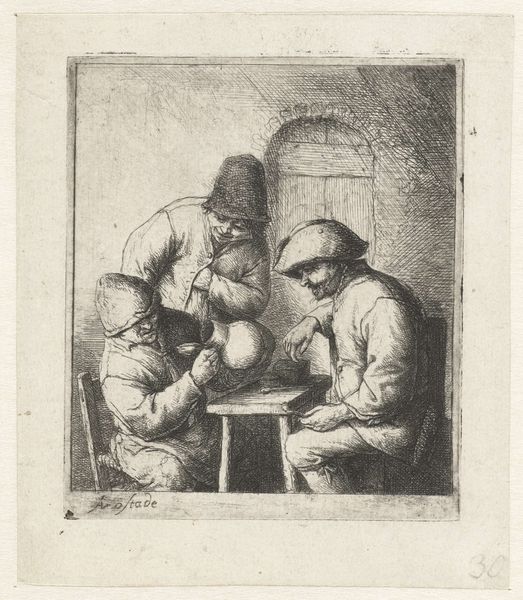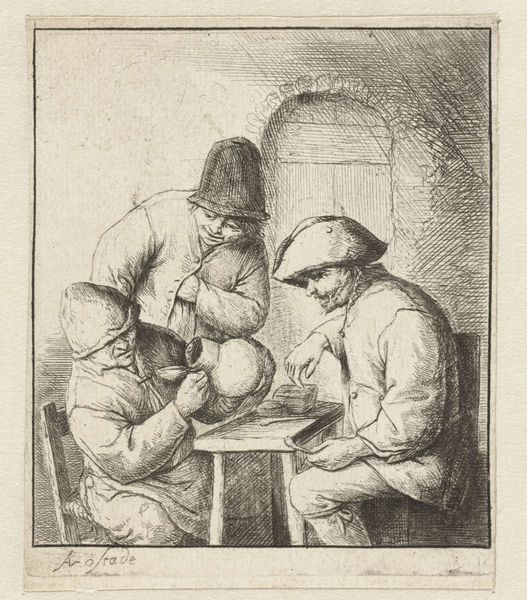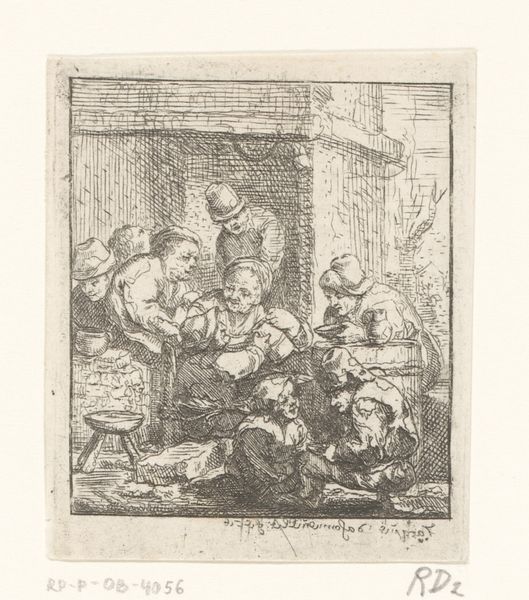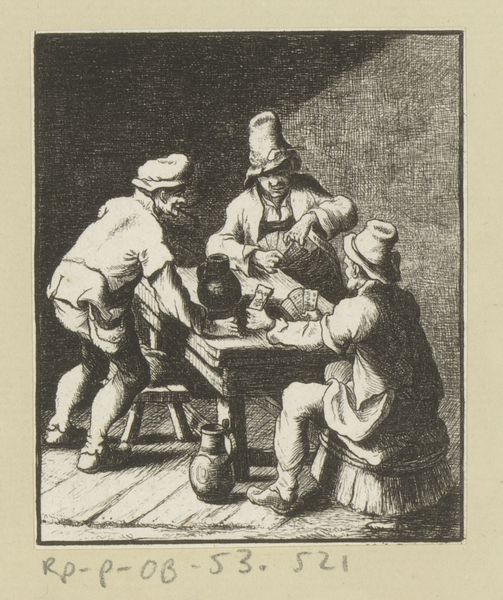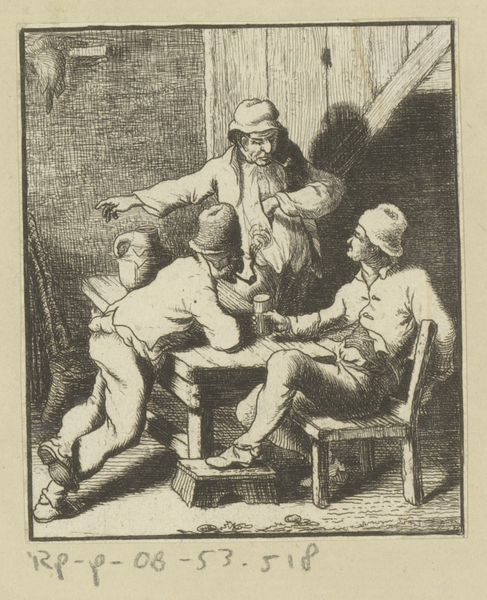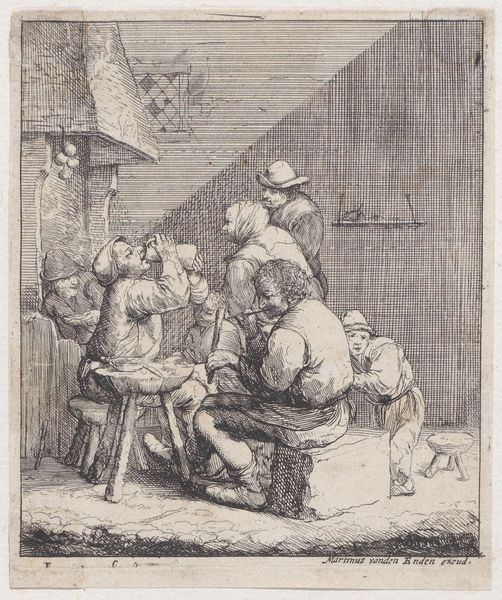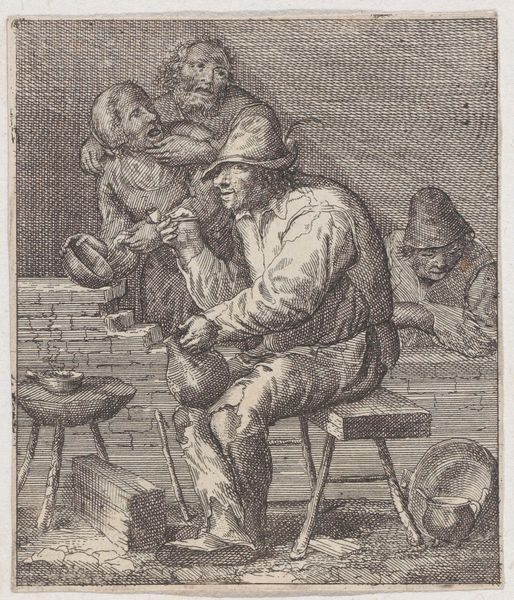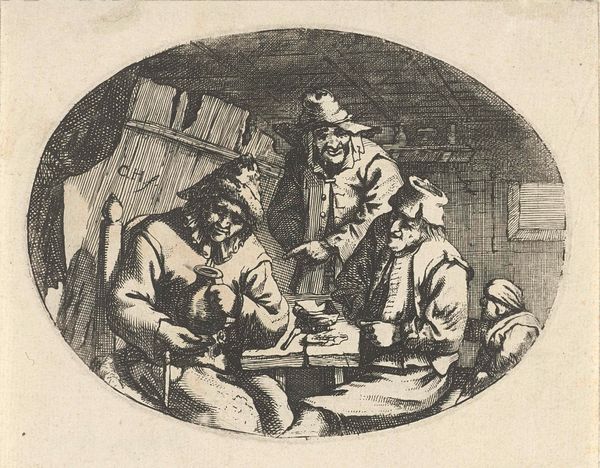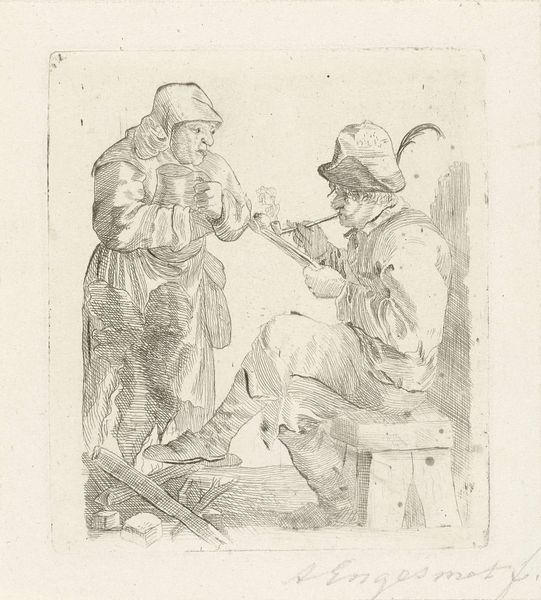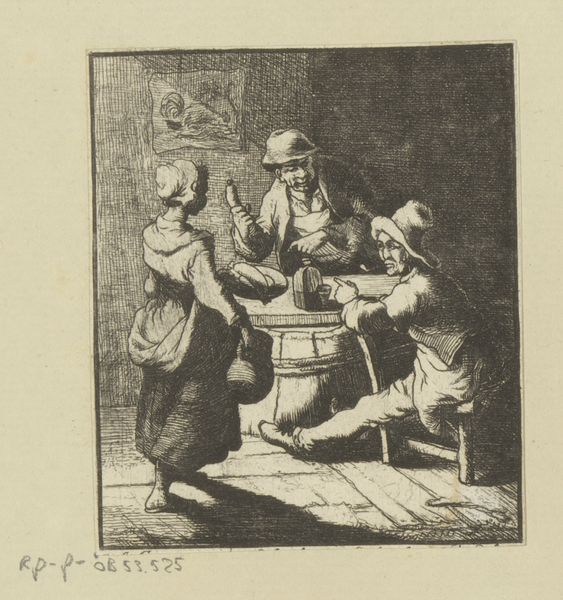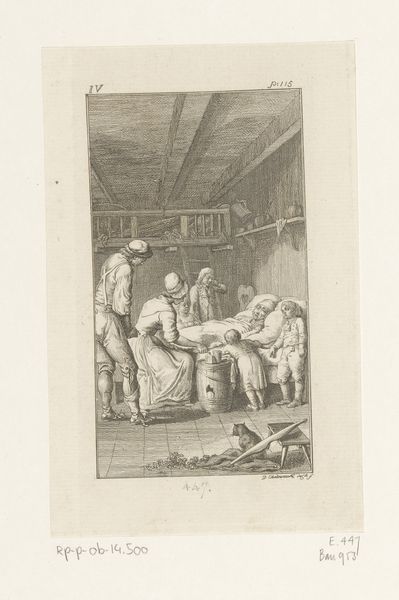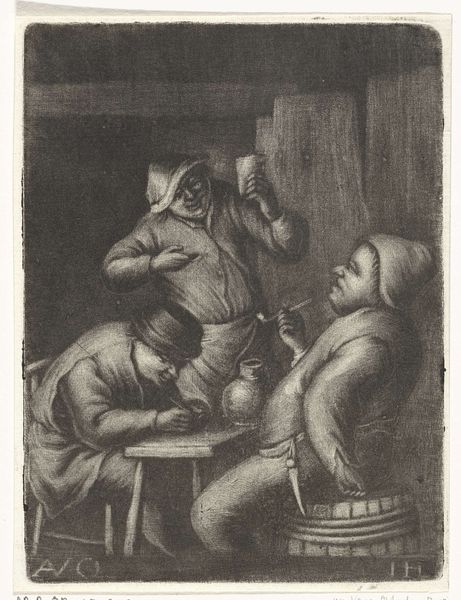
print, engraving
#
pencil drawn
#
narrative-art
#
baroque
# print
#
pencil sketch
#
old engraving style
#
charcoal drawing
#
figuration
#
pencil drawing
#
genre-painting
#
engraving
Dimensions: height 100 mm, width 85 mm
Copyright: Rijks Museum: Open Domain
Curator: This engraving, entitled "Man kijkt in lege kruik, twee mannen kijken toe," which translates to "Man looks into empty jug, two men look on," dates from between 1651 and 1745 and resides here at the Rijksmuseum. The piece is unsigned, leaving its creator in anonymity. Editor: Immediately, I’m struck by the almost caricatured weariness in the central figure; his sagging posture, downcast eyes... and the textures achieved simply through line work. There’s a real density there. Curator: It's fascinating, isn’t it? The jug acts as a symbolic vessel – of hope, sustenance, or perhaps even good fortune, now emptied. Consider how potent the symbolism of the void becomes here; the other figures’ silent observation adding weight to the primary subject’s perceived loss. Editor: Absolutely, and given the time period and probable social context, what was being poured from that vessel matters. The communal nature of the setting—three figures crammed around a small table—hints at a shared scarcity, suggesting a limited quantity of goods or wealth. I would hazard it to be, most likely, a lower-class setting? The crudeness of the line work contributes to that feeling of immediacy and perhaps even social commentary. It resists polish. Curator: Precisely. The narrative is not merely about emptiness but perhaps about a shared condition and the way we engage with despair. One cannot overlook the role of such imagery in cultural memory. Works such as these remind us how cyclical the issues of want and hope are throughout time. Editor: Looking closely at the physical making, the economy of line is quite impressive; there are some very dense clusters creating shadow and depth, then a sudden opening into plain negative space. We feel the limitations placed on the anonymous creator as well as their creative resolutions to these limitations. Curator: It leaves one reflecting on our modern abundance compared to the constraints felt by those in previous centuries and perhaps what we stand to lose despite progress. Editor: And how vital it remains to look, with fresh eyes, at those material limitations, seeing not just the struggle but also the invention, to consider the many hands – skilled and otherwise – that shape the culture of making.
Comments
No comments
Be the first to comment and join the conversation on the ultimate creative platform.
